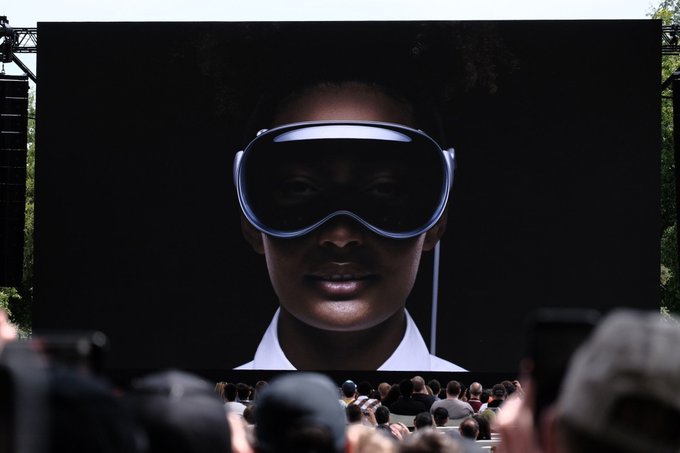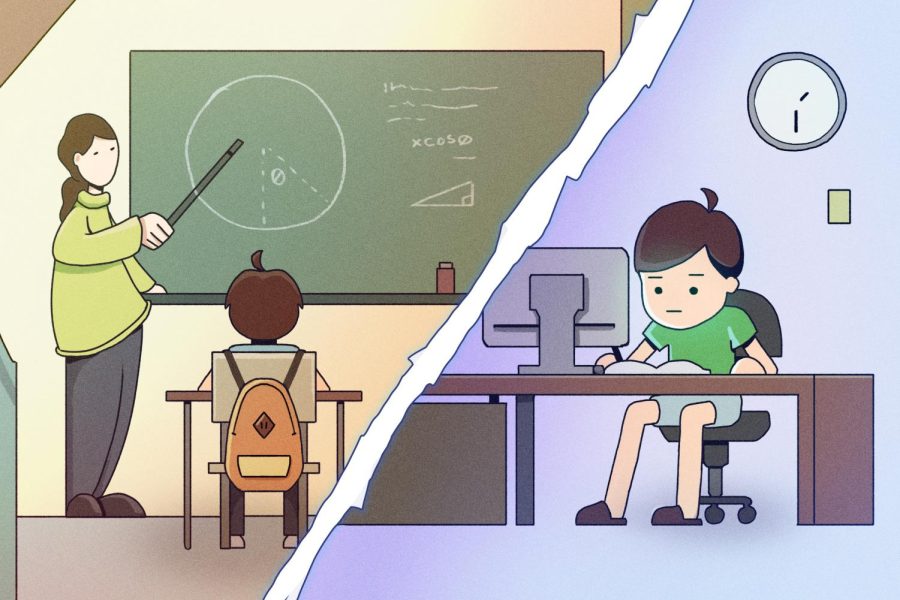On June 5, 2023, Apple CEO Tim Cook announced the creation of the Vision Pro, the world’s first interactive augmented reality (AR) headset, at the Worldwide Developers Conference. The headset, which Cook described as a “new kind of computer,” is a spatial computer that takes an entirely different approach to the virtual reality (VR) technology race. Apple released the product for pre-order on Jan. 19 and will begin selling it in U.S. Apple stores on Feb. 2 for $3,499.
Augmented reality enhances the real world through interactive digital content, but is certainly not new. AR has been around since the late 1960s when computer scientist Ivan Sutherland created the first mounted head-tracking display; even popular recent games like Pokémon GO, for example, are considered AR. The Vision Pro, however, takes AR to a much further level.
New AR advancements already have practical applications
The Vision Pro and future AR headsets are promising innovations for providing quality entertainment, offering a new medium for 3D design and testing and accelerating virtual working and learning productivity. Apple’s new headset maps displays onto the real world that users can interact with by using only their eyes, hands and voice. The displays are also high-quality thanks to Apple’s custom silicon micro-OLEDs, which contain 64 pixels in the space of one iPhone pixel — more pixels in each lens for each eye than a 4K TV. Sensors scan the environment around the user, which, combined with auditory ray-tracing, provides realistic surrounding sounds.
With AR technology, users can watch movies in perfect quality and audio on enormous displays that they can freely manipulate. These graphics and sound quality innovations also go hand in hand with the existing VR gaming industry.
Cameras throughout the headset project the outside world to the user and a 3D replica of the user to others through apps like FaceTime. Users can also control displays with hand movements or Bluetooth mice and keyboards. These innovations are massive improvements in the increasingly popular virtual learning and working fields.
Remote working and learning aren’t as effective as their in-person counterparts, but with AR technology, students would see and work with their teachers and other students without physically being in a classroom. This would be different from using applications like Zoom because students and workers can see each other in a real environment and with seemingly real 3D faces that aren’t behind cold computer screens.
Additionally, an interactive AR environment is perfect for 3D modeling and design. Creating the step up a dimension from 2D screens to a 3D headset will not only improve numerous design-related industries but also accelerate learning, like creating tangible 3D human anatomical models in biology or medical classes.
Unfortunately, we risk living an unhealthy life trapped behind screens
A major selling point of AR technology is that users don’t take off the device to see the real world. The Vision Pro, for example, detects other people and shows the user’s eye movements to them, a feature Apple calls EyeSight. The feature, among other AR innovations, means that users no longer have to take the headset off when they go outside or talk to people, which warrants concern. At this point, there would be little reason for people to take the headset off.
Wearing a headset, thus lacking real human interaction for extended periods, may damage social, emotional and even physical health. Although AR interactions with others may feel more real than ones through a computer screen, they are still virtual. As the world learned from the negative impacts of remote working during the pandemic, social isolation of this sort could still damage interpersonal relationships and lead to depression or anxiety.
AR headsets could cause significantly more damage than other electronic devices due to eye strain and vision loss. People often look away from phones or tablets at times to reduce eye strain, but AR devices wrap a full screen around one’s eyes for extended periods. Working, learning or simply enjoying entertainment for long hours would be dangerous to users’ vision.
Additionally, VR devices cause nausea and headaches because of correction latency — the inability for images to update as fast as a person moves their head. The Vision Pro has a new R1 processing chip that lowers this latency to 13 milliseconds, but some testers still felt nauseous and noted neck pain due to the headset’s weight.
Latency, battery, vision loss and weight problems with AR headsets could be fixed in the future eventually, but resolving the degradation of meaningful social interaction is much more difficult. It’s still unknown if digitally rendered 3D faces of friends or coworkers would improve remote interaction, but it won’t be the same as reality. The most obvious flaw with AR technology at the moment, however, is its exorbitant price.
The Vision Pro’s set price of $3,499 is much higher than Facebook’s $499 Meta Quest 3 and Sony’s $599 PlayStation VR2. With Apple’s Vision Pro consisting of many drawbacks while still being out of most people’s price range, the era of widespread AR use is still far away. The AR field holds great potential and risks, but the technology needs time to progress until we can realize its true worth.
















Ducker • Feb 8, 2024 at 4:09 pm
I had a life-changing experience using Vision Pro. I created a VR simulation in which my wife hadn’t left me and the kids chose to live with me instead. I stayed in the simulation so long that my neighbors sent EMS to check that I hadn’t fallen down the stairs. I also dreamed that I had a sexual relationship with my Lambo. It was extremely satisfying. If you’re asking, 10/10 for the Vision Pro. Escape your problems and your friends who hate you and get a VR set